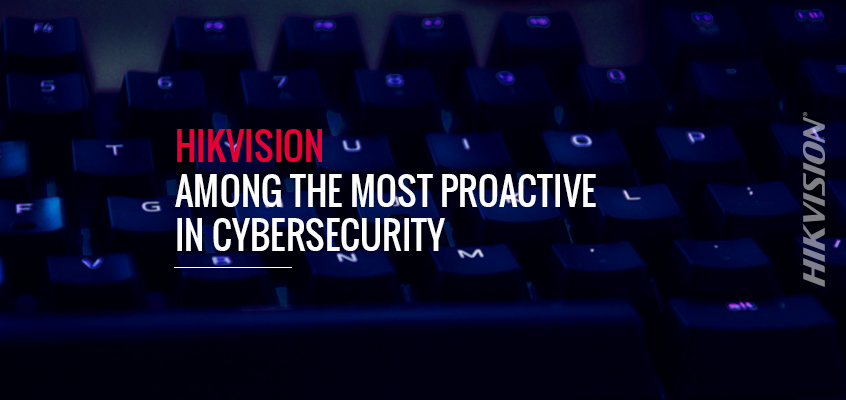SSI Article Advises Companies Be Proactive, Not Reactive, with Cybersecurity
SSI Lauds Hikvision as Among the Most Proactive Manufacturers in Cybersecurity Realm, Initiatives Help Reduce Security Concerns
In the Security Sales & Integration (SSI) article “Why Your Approach to Cybersecurity Needs to Be Proactive Rather Than Reactive,” the author advises organizations to take a proactive approach to cybersecurity by monitoring systems for potential vulnerabilities as a way to minimize security concerns and possible breaches.
Why Being Proactive is Beneficial
In the article, the author states: “You don’t have to look very far to find examples of organizations suffering cyberattacks due to a flawed reactive approach to their security. Only last year, the WannaCry ransomware attack caused enormous problems for the NHS [the U.K.'s National Health Service] and a number of organizations across the world — an estimated 230,000 computers were affected. And the problem here was that in many cases, organizations had failed to be proactive in keeping vital systems patched to address a known vulnerability.”
In addition to addressing vulnerabilities before there is a security breach, cyber criminals are constantly updating their tactics making security breaches more difficult to discover. According to the article, companies often don’t know there has been a breach, and it takes organizations 191 days on average to realize when they’ve been hacked.
From the article: “You need to assume that your business will be breached at some point and have appropriate monitoring controls and procedures in place to mitigate the risks.” Being proactive can help organizations detect vulnerabilities sooner and take positive action to resolve them.
To reduce risk of security breach, the author recommends monitoring networks and endpoints, performing a security assessment such as vulnerability scans or penetration testing, and providing regular cybersecurity training for employees.
Hikvision has been proactive about a number of cybersecurity programs in the last year, in an effort to support partners and minimize security concerns from potential vulnerabilities and other cyber threats.
Hikvision Lauded as Among the Most Proactive in Cybersecurity Realm
In the April 2018 article “It’s Time for Manufacturers to Step Up Their Cybersecurity Game,” SSI credited Hikvision North America with being one of the “industry’s most proactive [manufacturers] in this realm.” The piece referenced a number of headlines generated by Hikvision over the past year, which reference numerous cybersecurity initiatives. These include the following stories:
- Hikvision Tabs Ex-IBM Exec Security Architect as North American Cybersecurity Czar
- Hikvision Introduces Dedicated Cybersecurity Hotline
- Hikvision 2018 Cybersecurity Road Show Kicks Off in Southern California
- Hikvision Opens Security Industry’s First Source Code Transparency Center
Hikvision’s director of cybersecurity, Chuck Davis, was also appointed to the Security Industry Association’s (SIA) Cybersecurity Advisory Board earlier this year.
In that announcement Jeffrey He, president of Hikvision USA Inc. and Hikvision Canada Inc., said: “Hikvision North America's ongoing commitment to cybersecurity is reflected through a broad range of initiatives designed to keep property and assets safe, including growing our dedicated cybersecurity team, creating the industry’s first Source Code Transparency Center, and launching a cybersecurity hotline for our partners. We believe collaborative efforts such as the SIA board are vital, and we applaud SIA's leadership on cybersecurity."
Hikvision’s U.S. cybersecurity road show will be touring additional cities this fall, including Charlotte, Atlanta, Phoenix, Denver, Miami, Seattle, Portland and Chicago. The event, “Cybersecurity Myths and Facts: Presented by Hikvision,” is a 90-minute, interactive educational session led Davis where he provides an overview of cybersecurity, cyber threats and vulnerabilities, and ways to mitigate those threats.
Visit Hikvision’s events page for more information about upcoming cybersecurity road shows in your area.

